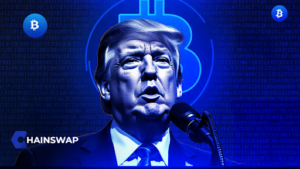
SPONSORED POST*
Fitzy, Founder of Chainswap
The relationship between crypto companies and the US government has been fraught with challenges for years. Ambiguous regulations, aggressive enforcement, and limited banking support for startups have driven investors and businesses to relocate operations and funds to more crypto-friendly jurisdictions overseas. The election of a pro-crypto, pro-business president in the US could usher in transformative changes, reshaping the industry both domestically and globally.
Let’s start with the basics: regulation itself isn’t the problem. In fact, it’s essential for legitimizing any industry. Well-crafted frameworks bring clarity for businesses to operate and foster trust among users, assuring them their investments are secure. But here’s the catch: regulation must strike the right balance. It should protect participants without stifling innovation. Unfortunately, the U.S. has often leaned toward enforcement rather than empowerment, creating more barriers than solutions.
The lawsuits that the SEC launched against major crypto platforms in 2023 were one example of creating an atmosphere of fear and uncertainty. Indeed, blockchain data even showed a net outflow of $4 billion from the U.S. in the wake of the lawsuits. Startups shuttered, talent moved abroad, and the Web3 ecosystem—which fundamentally lives off of international collaboration—gradually moved to more friendly jurisdictions like Europe and Asia. This has been an issue for many yeas, in which even Marc Andreessen, from Andreessen Horowitz has been vocal about.
Donald Trump’s return to office signals a significant shift in the leadership of critical regulatory agencies. Notably, Gary Gensler, infamous for his anti-crypto stance, is stepping down as Chairman of the SEC. In his place, the new president has nominated Paul Atkins, a known advocate for crypto, as the incoming chairman. This change reflects a broader policy shift that could reshape the regulatory landscape for the crypto industry in the U.S.
Furthermore, the formation of a crypto task force led by Commissioner Hester Peirce of the SEC, nicknamed “Crypto Mom,” illustrates seriousness on the path toward clear guidelines. Peirce has been vocal regarding regulatory clarity; she has called for a “safe harbor” for blockchain startups to experiment and grow safely, without the immediate ghost of enforcement against them. She can bring a lot of the structure here that the industry badly needs.
One of the loudest criticisms of the U.S. regulatory landscape has been that it relies on enforcement as a stand-in for proactive policymaking. This “shoot first, ask questions later” approach has chilled innovation. Take, for instance, the collapse of Silicon Valley Bank in 2023. The majority of Web3 companies lost their main banking relationships overnight, and increased scrutiny on banks working with crypto clients further isolated the industry.
Contrast that with jurisdictions like Singapore or Switzerland, which have welcomed the industry in with clear and supportive frameworks, and today host some of the most exciting projects in DeFi, NFTs, and blockchain infrastructure. For the U.S. to catch up, the focus needs to shift from punishing the bad boys to empowering the good ones.
At ChainSwap, we’ve always believed in the power of interoperability and efficiency. The fragmented nature of today’s blockchain ecosystem limits its potential. That’s why we’re committed to creating seamless cross-chain swaps, reducing barriers for users and businesses alike. But here’s the thing: innovation like ours thrives in environments where policies are clear and supportive.
The Trump administration’s focus on efficiency, spearheaded by establishing the Department of Government Efficiency and headed by Elon Musk, could be only the beginning of a regulatory transformation. Seamless processes and policies friendly to innovation could make the U.S. the place to be for Web3 businesses. For companies like ChainSwap, it means being able to scale faster, collaborate more effectively, and bring real value to users without constantly looking over our shoulders for regulatory roadblocks.
Let’s not forget-the big picture is that Blockchain and Web3 go beyond financial innovation to competitiveness. Countries that open their arms to these technologies will determine the future of finance, governance, and commerce.
The U.S. stands at a crossroads today: one in which it will continue to yield ground to more progressive policy regimes or rise to the challenge and resume its leadership mantle. Early moves by the Trump administration suggest the latter is possible, but execution will be key.
The stakes are very high: Bitcoin is at all-time highs, and blockchain is on the lips of politicians and regulators everywhere. The world is watching, and the policies set in the next few years will determine whether the U.S. becomes the global hub for crypto innovation or a cautionary tale of missed opportunities.
As someone deeply invested in the future of blockchain, I’m optimistic. The signs of change are there: leadership shifts, the establishment of pro-crypto task forces, and a growing recognition of the industry’s potential. But optimism alone won’t suffice. We need action.
For the U.S. to succeed, it must:
- Develop clear, comprehensive regulatory frameworks that provide guidance without stifling innovation.
- Foster public-private collaboration to ensure policies are informed by industry expertise.
- Harness the power of decentralization to create a resilient, more transparent financial system.
The road ahead will indeed be tough: a balancing act of innovation and regulation. However, under the right leadership and with the right policies, the U.S. can get back to being a leader within Web3. And that is a future worth building.
*This article was paid for. Cryptonomist did not write the article or test the platform.

 8 months ago
49
8 months ago
49




 English (US) ·
English (US) ·